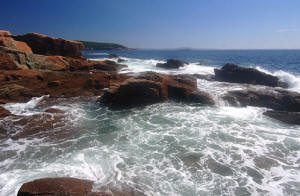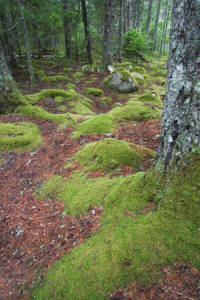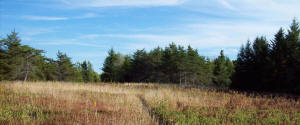
Our Interests
Programs We Offer
Journals We Publish
Our Campus and Nature Reserves
Individual and Group Retreats
About Downeast Maine
Community Engagement
About Us
Donate Now
Contact Us
The landscape ecology of Eagle Hill and eastern Maine

Eagle Hill is the highest point on one of a series of peninsulas that extend into the Atlantic Ocean along the coast of eastern Maine. To the immediate west is the Schoodic Point section of Acadia National Park and to the immediate east is Petit Manan National Wildlife Refuge. The Institute lies within a coastal fringe of northern boreal forest with mostly spruce and fir and a mix of maples, birches, and other species. Most of the coastal area is sparsely inhabited. To the north, the land is used for logging but is still essentially wilderness. An unusually rich variety of habitats can be found within a short distance of the institute: many different marine habitats as well as marshes, fens, bogs and heaths, blueberry barrens, lakes and ponds, rivers and streams, and extensive forested lands. Considerable tracts of land nearby have been set aside for conservation by the National Park Service, the National Wildlife Refuge System, the Nature Conservancy, the State of Maine, as well as private citizens.

For the study of natural history, the area offers outstanding and, in many ways, unparalleled study opportunities. Geologically, this area of Maine is of special interest since it is one of the world's best example of a landscape reworked by glaciers around 18,000 years ago and thus serves as an “open book” for studying the results of the most recent Ice Age.

